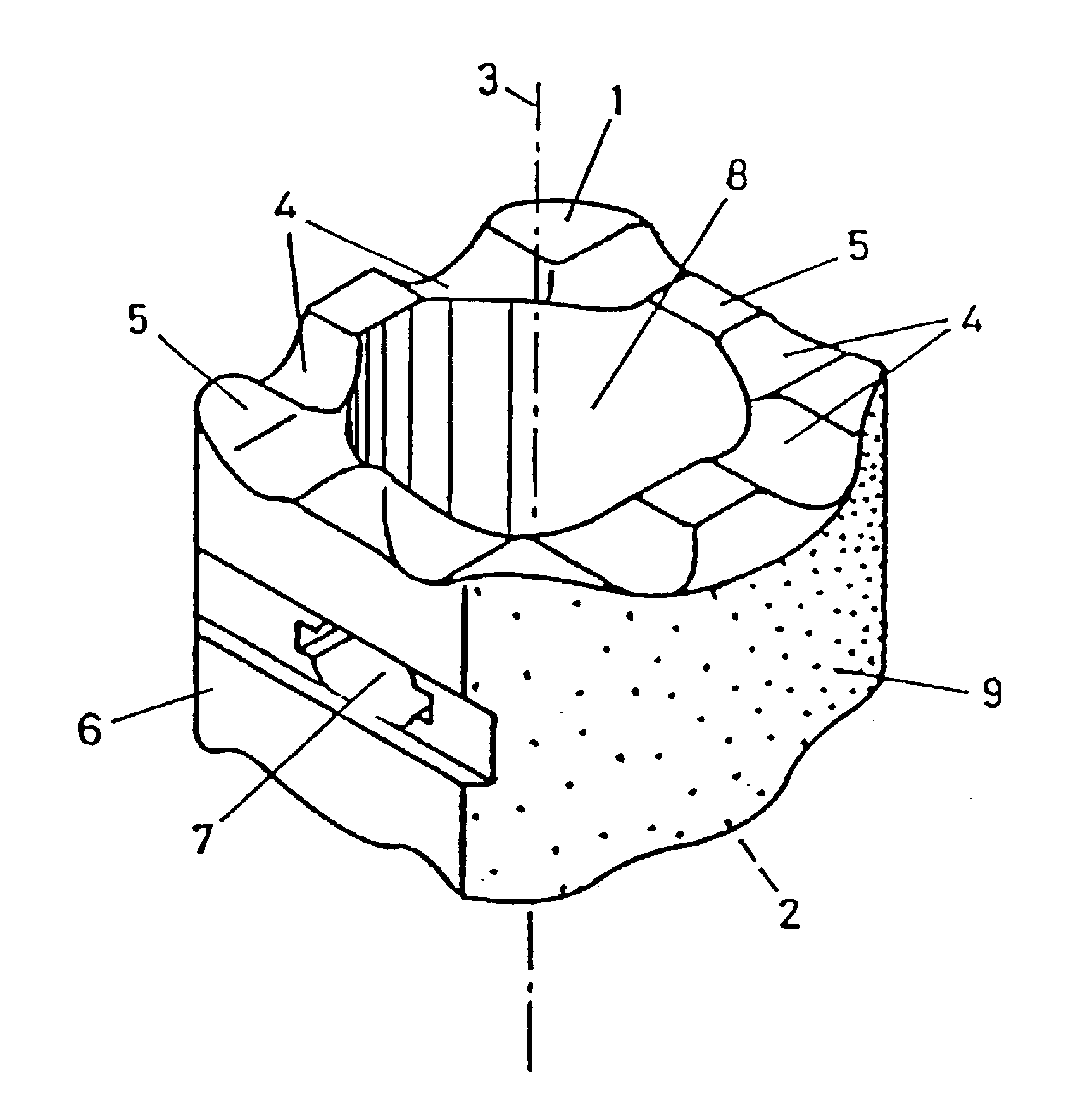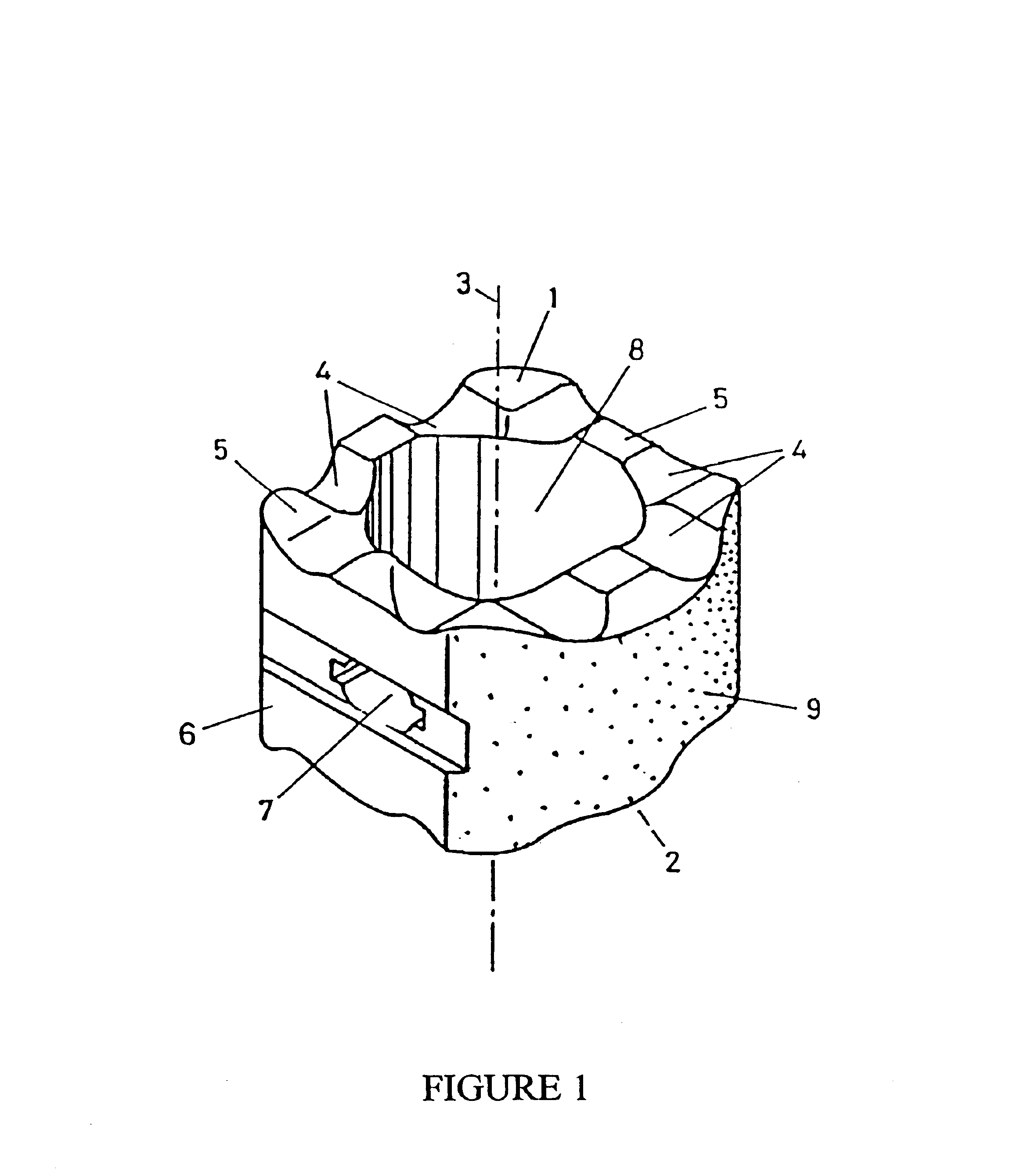Intervertebral implant
- Summary
- Abstract
- Description
- Claims
- Application Information
AI Technical Summary
Benefits of technology
Problems solved by technology
Method used
Image
Examples
Embodiment Construction
The intervertebral implant illustrated in FIG. 1 consists essentially of a hollow cylinder with an inner space 8, a longitudinal axis 3, a top surface 1 and a bottom surface 2. The intervertebral implant is essentially produced from a polycrystalline ceramic material. The ceramic material has a porosity of 5 vol. %, the pores are filled with air. The width of the pores is less than 100 μm and preferably less than 50 μm. The foreign-phase content of the ceramic material is 1.5% by weight. The pressure resistance of the ceramic material is 500 Mpa.
The top and bottom surfaces 1, 2 serve to provide bone contact with the surface plates of two vertebrae and are configured accordingly. The wall thickness of the intervertebral implant is 7 mm, the density of the ceramic material is 3.2. The top surface 1 and the bottom surface 2 are not planar but are provided with a number of grooves 4 and ridges 5 extending in a perpendicular (i.e. radial) direction relative to the longitudinal axis 3.
The...
PUM
| Property | Measurement | Unit |
|---|---|---|
| Length | aaaaa | aaaaa |
| Length | aaaaa | aaaaa |
| Percent by mass | aaaaa | aaaaa |
Abstract
Description
Claims
Application Information
 Login to View More
Login to View More - R&D
- Intellectual Property
- Life Sciences
- Materials
- Tech Scout
- Unparalleled Data Quality
- Higher Quality Content
- 60% Fewer Hallucinations
Browse by: Latest US Patents, China's latest patents, Technical Efficacy Thesaurus, Application Domain, Technology Topic, Popular Technical Reports.
© 2025 PatSnap. All rights reserved.Legal|Privacy policy|Modern Slavery Act Transparency Statement|Sitemap|About US| Contact US: help@patsnap.com


